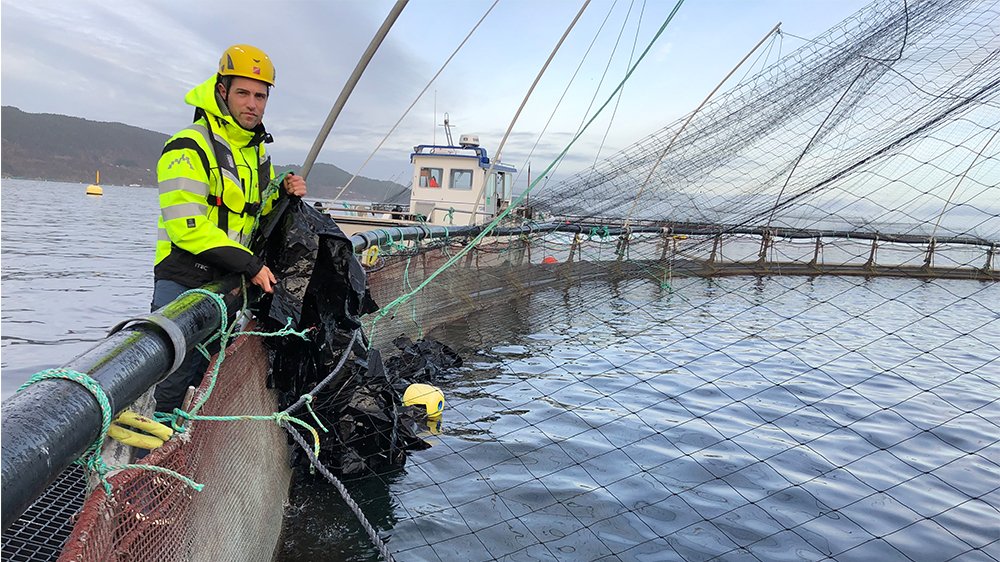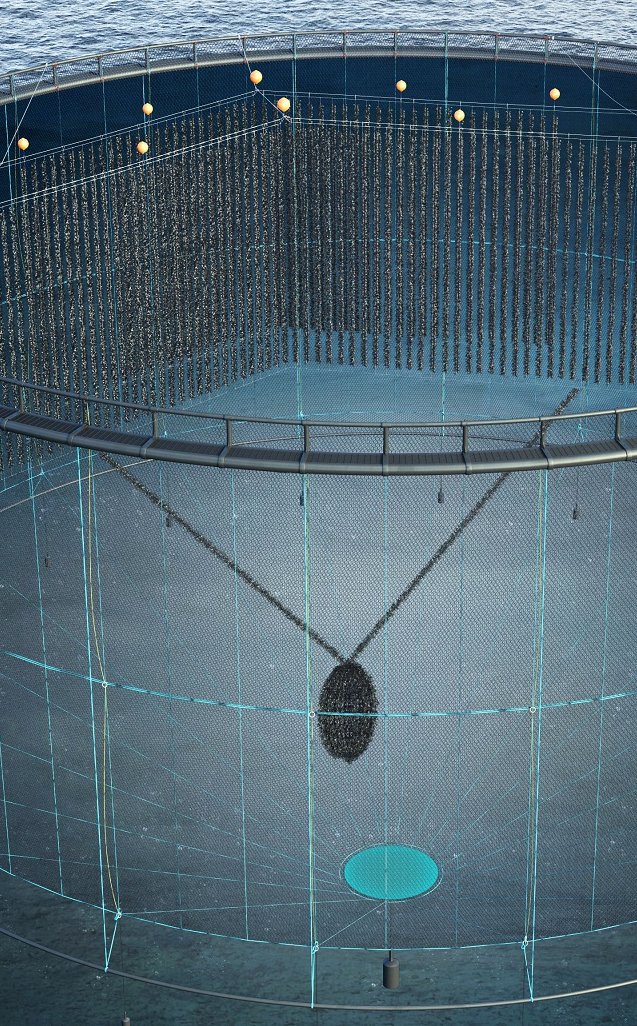
Can you breed a whole generation of salmon without lice treatment? Then you'll have to depend on the cleaner fish, and they would need optimum conditions to graze effectively. Cleaner fish are more effective lice eaters when the environment in the pen suits their behavior. Let's look at some best practices. Lumpfish and wrasse are cleaner fish with many similarities but they are different in biological terms. It is essential to adapt the pen to the species in question. We want the fish to stay at the same depth as the salmon, preferably in the main shed performing delousing. However, temperature fluctuations and currents cause the cleaner fish to leave the preferred location. Knowing the fish's biology and behavioral patterns, we can protect it from hazards and enable it to return to safe areas to continue to graze on the salmon.
Main shed for lumpfish and wrasse
Cleaner fish need sheds and resting places. The main shed appears as a corridor in the pen that benefits both species. It's a "home" that caters to the needs of both lumpfish and wrasse, and the louse grazing takes place here. When the salmon needs delousing, it swims into the main shed so cleaner fish may graze on it.
Bottom/winter shed for wrasse

In the winter, when the temperature drops, the wrasse occupies the deeper regions of the pen to hibernate. The bottom of the pen is a threatening environment to wrasse, so without an appropriately designed and positioned shed, it may not survive hibernation.
When the temperature rises, the wrasse is ready to graze again. But it's reluctant to leave the safety of the bottom shed. We need to provide a safe journey back to the main shed.
The illustration to the right shows how a leading shed provides a safe path from the bottom shed back to thesalmon in the main shed.
The leading shed is also a great aid when deploying wrasse into the pen. These unstable conditions are perceived as a threat to the fish and make it go straight for the deep, but the leading shed helps the fish back to the main shed. It is essential to position this shed correctly and connect it for the entire length. If the leading shed does not connect with the main shed, the wrasse will return to the safety of the bottom shed.
Resting shed for lumpfish
Lumpfish is a worse swimmer than wrasse. Its large body and small tail pose a challenge in locations with strong currents. Lumpfish will struggle to resist it and be pressed against the net wall. This situation is dangerous to the fish and affects mortality.
Lumpfish are utterly dependent on a shed close to the net wall so that they can seek protection and attach themselves to the shed. Intimate knowledge of local conditions and a deep understanding of the currents at the location are essential to position the shed correctly.
When the current turns or abates, the lumpfish will swim back to the main shed to resume grazing on the salmon.
Sheds must be maintained
If you decide to use cleaner fish, my clear advice is that you do it thoroughly. If not, you may use delousing agents instead. Doing this halfway will leave you with sheds just hanging arbitrarily in the pen. They will not support the cleaner fish, and you'll also have to commit to large scale delousing.
Those who succeed with cleaner fish manage to create the right environment and administer first-class maintenance, thus avoiding multiple delousing treatments.
Overall, it's a lot less work to maintain the sheds properly than to engage in delousing. It's also vital to fish welfare.
Business upside
Historically, there has been some accept for sheds being essential for cleaner fish to thrive. These days more and more fish farmers become aware that, in addition to maintenance, knowledge on the positioning and design of sheds is required to achieve the desired effect.
The economic outcome of optimizing conditions for cleaner fish are twofold: The procurement costs for cleaning fish goes down, but the main benefit is reducing the need for delousing treatment because the cleaner fish graze more efficiently.
In brief, three conditions must be met to provide cleaner fish with optimum working conditions:
- Use sheds and position them correctly based on the type of cleaner fish and the conditions at the location
- Maintain the sheds regularly
- Feed the cleaner fish the right way
Our concept for the optimum utilization of cleaner fish is called the GOOD concept. Please click the button below if you would like to find out more.
{{cta('85967aee-ff46-458e-b76d-422b9637ff7b')}}